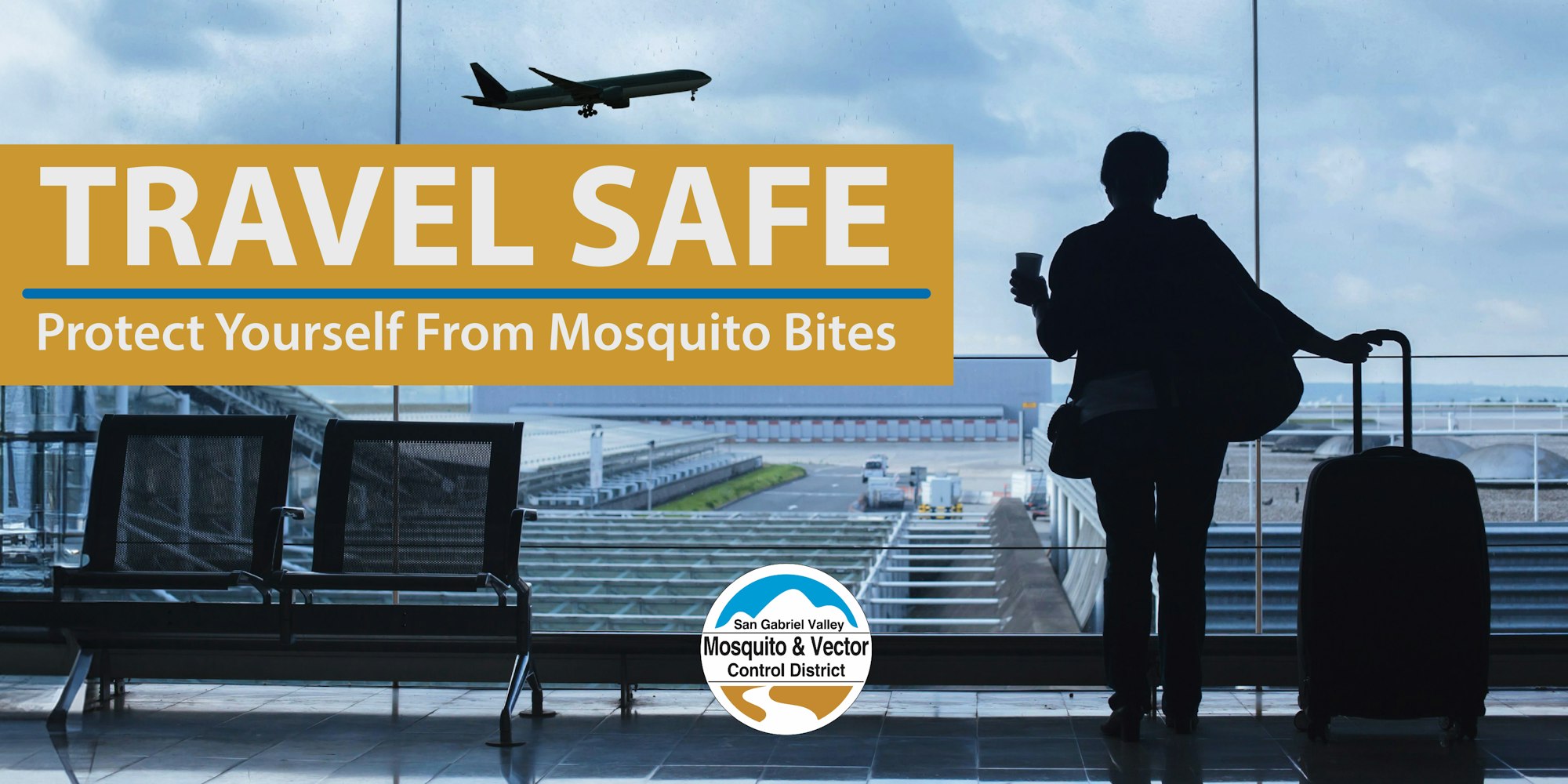Travel Safe: Stay Bite-Free while Abroad

How to Enjoy a Bite-Free Vacation
Before jetting off to your next destination, remember to take the necessary steps to ensure a mosquito bite-free vacation. There are various mosquito-transmitted diseases circulating around the world, primarily in tropical and sub-tropical countries. Protect yourself, your family, and your community by taking the following steps!

The Centers for Disease Control and Prevention has a dedicated page for Travelers' Health where travelers can research their destination ahead of time. Look for any emerging diseases or epidemics. Additionally, you can research vaccines that are important to take before visiting the country.
Visit the CDC Travelers' Health Page
Alternatively, you can research diseases transmitted by mosquitoes and their prevelance around the world. In the San Gabriel Valley, we have the invasive Aedes mosquito that can transmit diseases like dengue, zika, chikungunya, and yellow fever. Therefore, travelers want to avoid getting sick abroad to reduce the risk for potential outbreaks at home.
Take a look at the maps provided by the CDC for the risk in your destination.

Which Repellents Work? 🧐
Repellents must have 1 of the 4 following active ingredients:
🟢 Oil of Lemon Eucalyptus 🟢
🟠 Picaridin 🟠
🔵 DEET 🔵
🟡 IR3535 🟡
Choosing which repellent to use is a personal choice, as long as you choose 1 of the 4 CDC-recommended active ingredients: Oil of Lemon Eucalyptus, Picaridin, DEET, or IR3535.
The active ingredients will be printed on the front of any repellent bottle, along with a percentage, which is a range of how long protection will last -- like sunscreen.
Similar to sunscreen, you apply evenly onto exposed skin whenever you are outdoors. This includes your face, however gently apply repellent onto your hands and then pat onto face.
Always follow the directions on the repellent bottle label and have adults apply repellent onto children.
During the hotter months, when we need extra sun protection, make sure to apply sunscreen first and then apply repellent -- repellent should always be your top layer.
Check out your destination's website and travel advisories to determine if repellent is necessary for your trip.
Repellent wipes come in handy for on-the-go and are compatible with carry on luggage rules. They are also great for kids who are hesitant about aerosol sprays.
Repellent Myths 👀
Everyone has their favorite go-to's when it comes to protecting yourself and loved ones from mosquitoes, but are they effective? 🤔
We breakdown repellent myths during our episode and break some abuelas' hearts along the way ...
MYTH
Sorry abuela but Vick's does not protect you or mask your scent from mosquitoes. Mosquitoes are attracted to our warmth and what we breathe out, CO2. While Vick's helps comfort us in other ways, it will not protect us from getting bites.
MYTH
Repellent bracelets, clips, and fans only protect that specific area. Unless you're willing to cover your entire body in repellent bracelets or fans, you're better off using repellent that covers exposed skin when you're outside.
MYTH
While citronella candles and plants work, they only work in that specific area. This means that a slight breeze can deter the direction of protection. Similar to other "repelling" devices, you'd have to cover your entire patio or yard with candles or plants in order to protect yourself from bites. Want an easier way? Wear repellent on exposed skin whenever outdoors.

Round up your neighbors and bite back! We help you take back your community with the Bite Back Program.
We have different grassroots methods to get mosquitoes out of your yard. Our Bite Back Outreach team is ready to help you build healthier, bite-free communities by bridging the gap between residents and experts.

